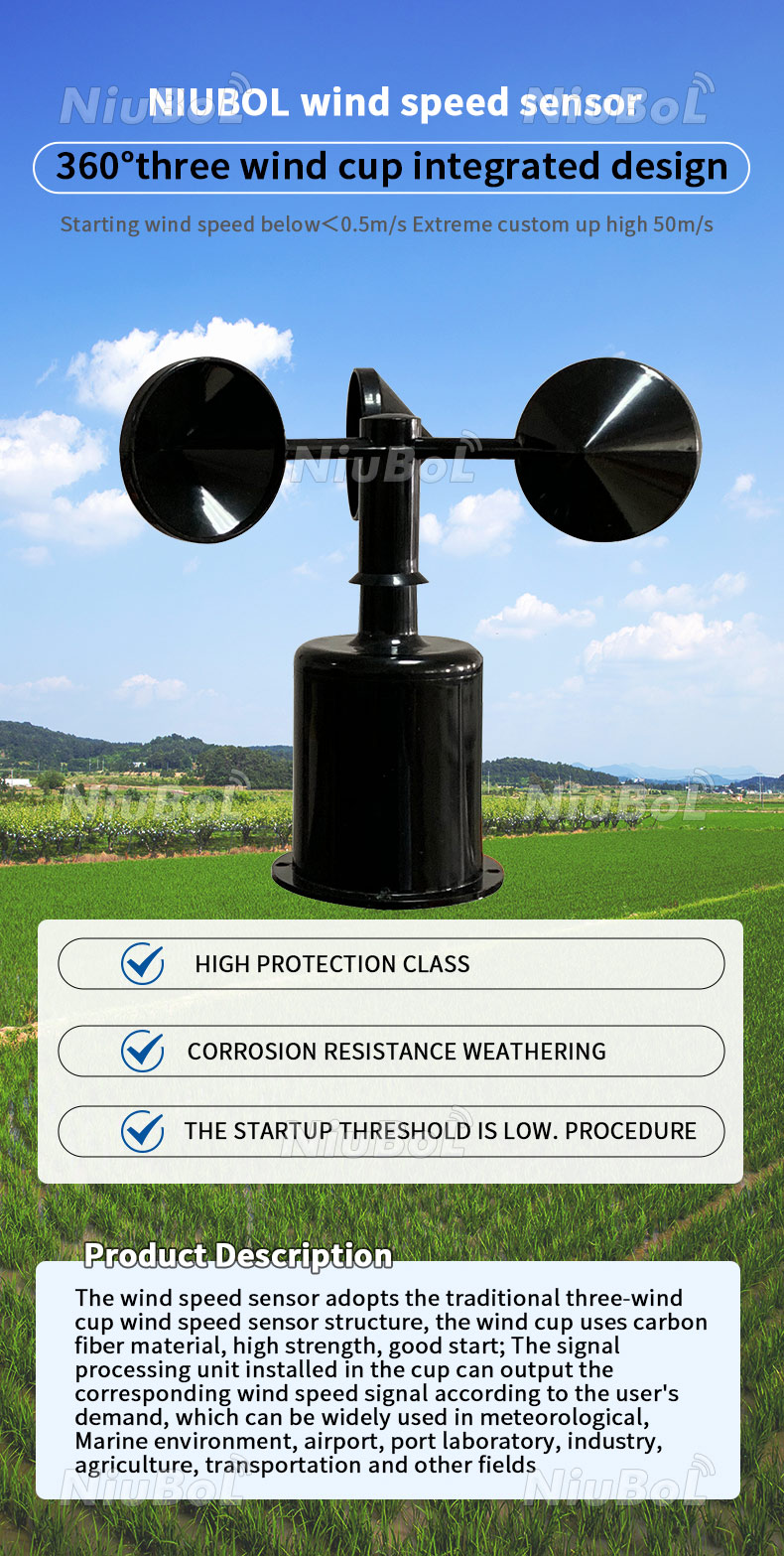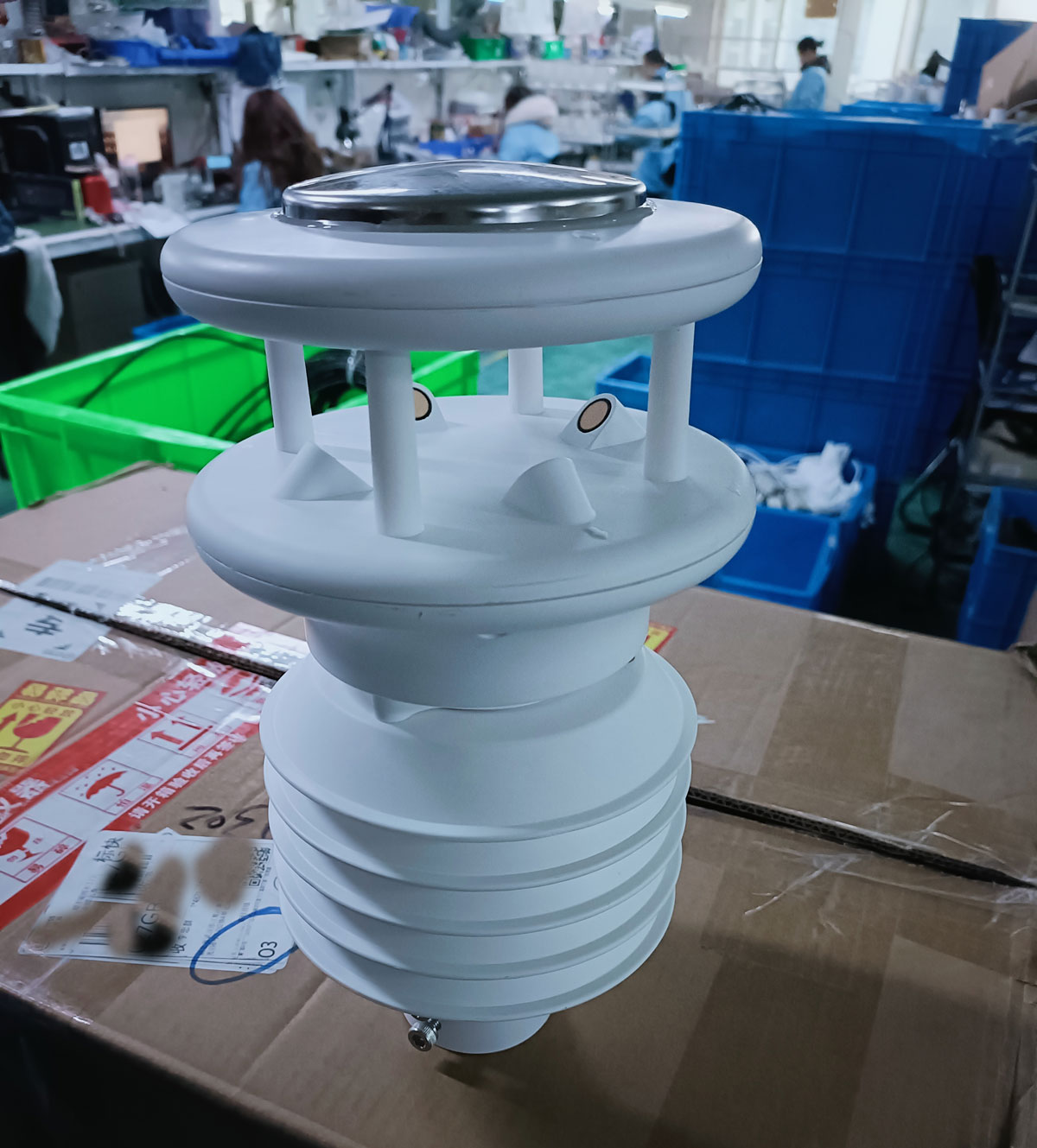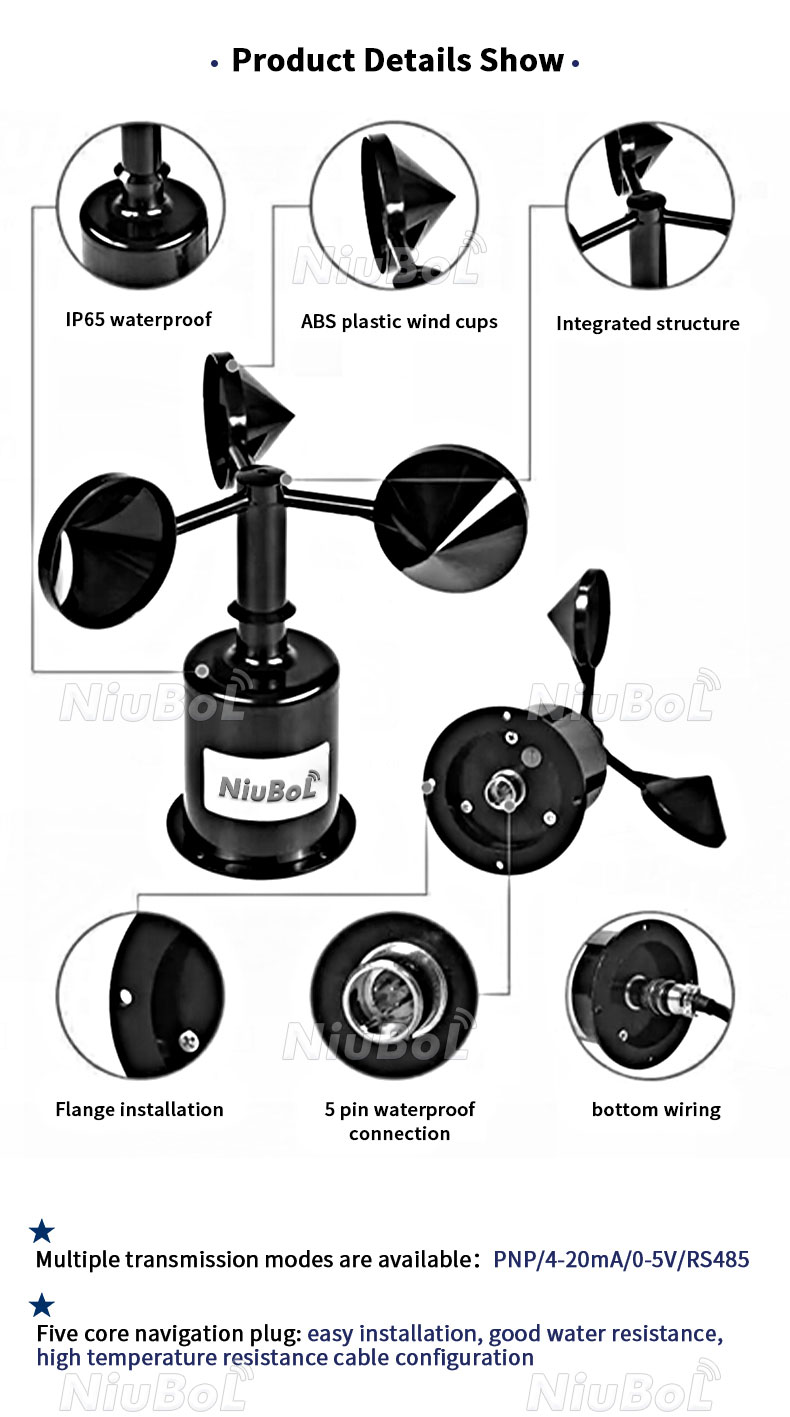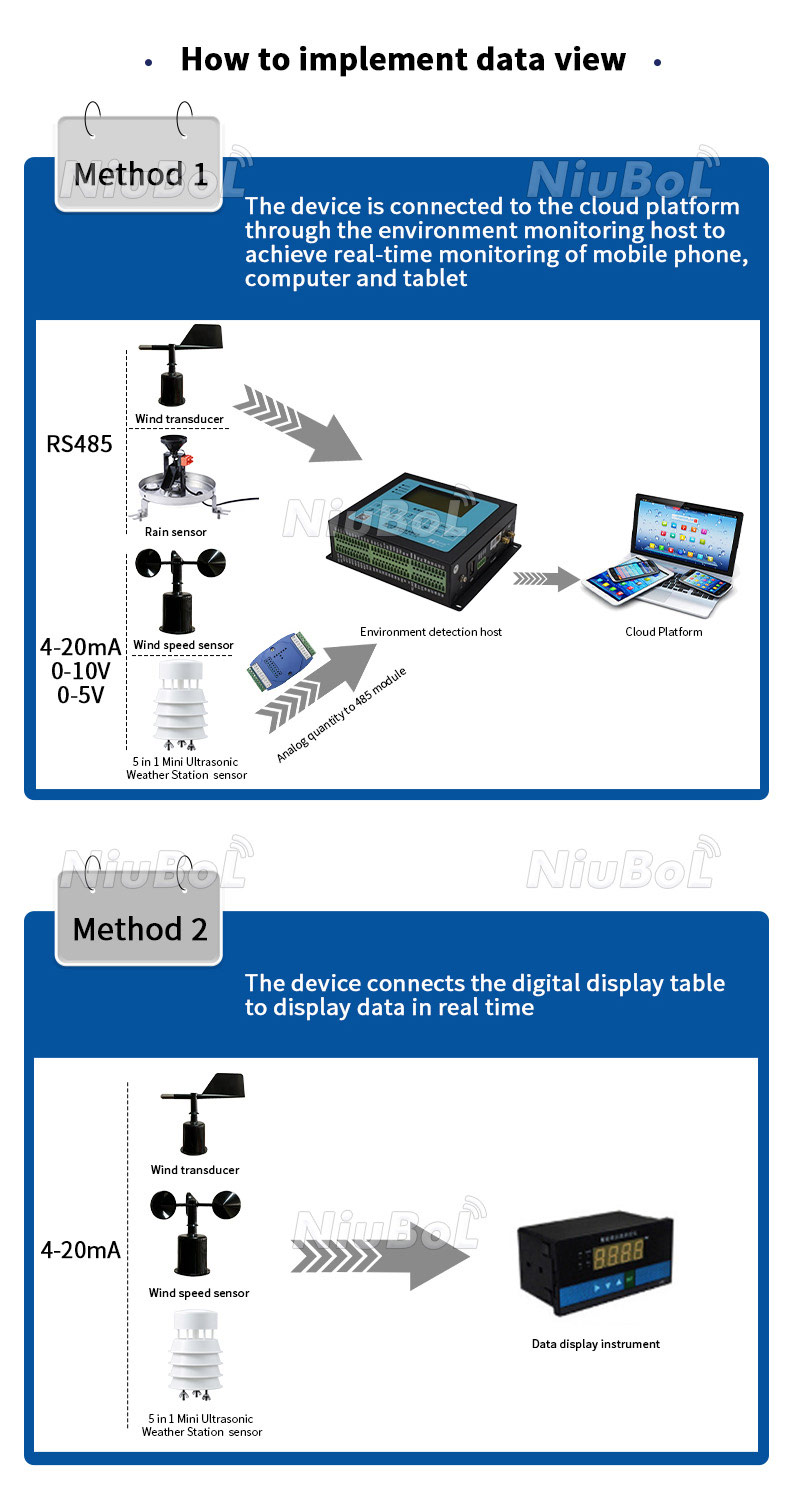

— Blogs —
—Products—
 Consumer hotline +8618073152920
Consumer hotline +8618073152920 WhatsApp:+8615367865107
Address:Room 102, District D, Houhu Industrial Park, Yuelu District, Changsha City, Hunan Province, China
Product knowledge
Time:2025-10-25 10:33:40 Popularity:473
Anemometers, as core devices for measuring wind speed, have a history dating back to the 18th century, but mechanical cup anemometers have long dominated in industrial and scientific applications.
1950s–1980s: Mechanical cup anemometers were widely used, with advantages in simple structure and easy maintenance, but slow response speeds and limited accuracy for low wind speeds.
1990s–2010s: Ultrasonic and hot-film anemometers emerged, featuring no moving parts, fast response, and strong corrosion resistance, widely applied in weather stations and industrial scenarios.
2020s: Integration of digitalization and IoT, where modern anemometers not only collect wind speed data but also combine AI algorithms and cloud analysis to enable predictive maintenance and intelligent decision-making.
According to MarketsandMarkets data, the global wind speed sensor market is projected to reach approximately $900 million by 2030, with a compound annual growth rate of about 6.8%, and digital anemometers are the primary driver of market growth.
Modern digital anemometers emphasize not just wind speed data collection but also intelligence, precision, and real-time performance:
- Ultrasonic Anemometers: Measure wind speed by detecting the time difference in sound wave propagation, with no mechanical friction and high long-term stability.
- Hot-Film Anemometers: Suitable for low wind speed measurements, with sensitive response but sensitivity to ambient temperature.
- Electromagnetic/Laser Doppler Anemometers: Primarily used in research and high-precision industrial scenarios.
IoT Integration: Sensor data can be uploaded to cloud platforms via LoRa, NB-IoT, Wi-Fi, 4G, and other methods, combined with data analysis and visualization tools to enable intelligent alarms and automated decision-making.
The applications of modern anemometers have extended from research and meteorology to multiple fields including industry, agriculture, wind power, and smart cities.
- Wind Farm Optimization: Ultrasonic anemometers deployed in European wind farms monitor wind speed and direction changes to optimize turbine angles and power output.
- Airport Meteorological Monitoring: Wind speed sensors deployed at airports enable real-time monitoring of wind speed and gusts, assisting in aviation scheduling and safety management.
- Building Wind Engineering: Digital anemometers used during construction and operation phases monitor airflow to optimize roof ventilation and wind environment comfort.
- Agricultural Weather Stations: Farms equipped with digital anemometers, combined with temperature, humidity, and rainfall sensors, guide farmers in irrigation and crop protection.
- Smart City Meteorological Systems: Meteorological bureaus use IoT wind speed sensors to monitor urban microclimates, assessing urban heat island effects and optimizing air circulation.

To ensure long-term measurement accuracy and equipment lifespan, selection and maintenance are equally important:
Selection Tips: Choose anemometer types (mechanical, ultrasonic, hot-film) based on the application environment, considering power supply methods (solar/battery/AC) and output signal types (analog/digital/RS485/Modbus).
Maintenance Tips: Regular calibration (every 6–12 months), clean sensor probes, avoid dust and snow blockage; digital anemometers typically require low maintenance, but check communication and battery status.
| Type | Response Speed | Accuracy | Service Life | Maintenance Cost |
| Mechanical Cup | Medium | ±3% | 5–10 years | Medium |
| Ultrasonic | High | ±1.5% | 5–10 years | Low |
| Hot-Film | High | ±2% | 8–10 years | Medium |

A: Ultrasonic types are resistant to environmental corrosion, but hot-film types require regular cleaning.
A: Recommend annually for mechanical cup types, every 1–2 years for digital anemometers; quarterly for critical applications.
A: Support connections via LoRa, NB-IoT, 4G/5G, or Wi-Fi, uploading data to cloud platforms through API interfaces.
A: Data exceeding historical wind speed ranges, sudden drastic fluctuations, or sensor disconnections should prompt immediate investigation.

- AI and Edge Computing: Edge devices can process data in real-time, reducing cloud load and enabling low-latency predictions.
- Multi-Parameter Fusion: Integrated monitoring of wind speed, direction, temperature, humidity, and pressure to build comprehensive meteorological analysis systems.
- IoT and Cloud Integration: IoT wind speed sensors combined with cloud computing and big data analysis for remote monitoring and prediction.
- Sustainable Applications: In wind power, agriculture, and smart cities, wind speed monitoring supports energy savings, emission reductions, and refined management.
NiuBoL specializes in digital anemometers and intelligent meteorological monitoring solutions, offering high-precision, low-maintenance, IoT-integrated products. Whether for agriculture, wind power, research, or smart city projects, our engineering team provides customized deployment solutions.

The development of anemometers has transitioned from the mechanical era to digital intelligence, integrating AI algorithms, IoT, and cloud platforms to achieve high-precision measurement and intelligent decision-making. The global market is growing rapidly, with application scenarios spanning wind power, airports, construction, agriculture, and smart cities. Through scientific selection and proper maintenance, digital anemometers will become essential tools for enterprises and institutions to enhance efficiency and reduce risks. NiuBoL offers one-stop solutions to help various industries advance toward a future of high-precision, intelligent wind speed monitoring.
NBL-W-21GUWS-Ultrasonic-Wind-speed-and-direction-Sensor.pdf
Related recommendations
Sensors & Weather Stations Catalog
Agriculture Sensors and Weather Stations Catalog-NiuBoL.pdf
Weather Stations Catalog-NiuBoL.pdf
Related products
 Combined air temperature and relative humidity sensor
Combined air temperature and relative humidity sensor Soil Moisture Temperature sensor for irrigation
Soil Moisture Temperature sensor for irrigation Soil pH sensor RS485 soil Testing instrument soil ph meter for agriculture
Soil pH sensor RS485 soil Testing instrument soil ph meter for agriculture Wind Speed sensor Output Modbus/RS485/Analog/0-5V/4-20mA
Wind Speed sensor Output Modbus/RS485/Analog/0-5V/4-20mA Tipping bucket rain gauge for weather monitoring auto rainfall sensor RS485/Outdoor/stainless steel
Tipping bucket rain gauge for weather monitoring auto rainfall sensor RS485/Outdoor/stainless steel Pyranometer Solar Radiation Sensor 4-20mA/RS485
Pyranometer Solar Radiation Sensor 4-20mA/RS485
Screenshot, WhatsApp to identify the QR code
WhatsApp number:+8615367865107
(Click on WhatsApp to copy and add friends)
